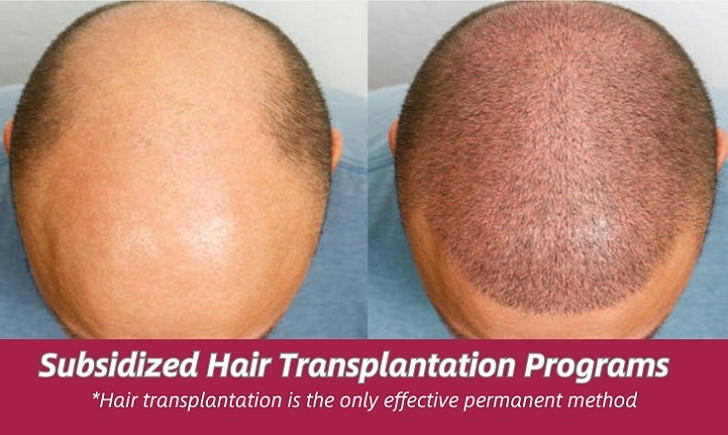How to permanently improve hair loss at a low price?
Whether it is hereditary hair loss, thinning hair, or hair loss caused by disease or trauma, hair transplantation is the only effective and permanent solution. Fortunately, in addition to traditional commercial hair transplantation, there are some low-cost or subsidized hair transplantation solutions, such as clinical trials, preferential activities, non-profit organization funding, etc. You can find a solution that suits you.

Hair transplantation is the only effective permanent method
1. Solve hereditary hair loss (androgenic alopecia): Male hereditary hair loss (M type, Mediterranean type) cannot be reversed by ordinary hair growth products, and hair transplantation is the only effective permanent improvement method.
2. Repair scarring hair loss: Due to trauma, burns, surgery and other reasons, the local scalp does not grow hair, and hair transplantation can fill the missing area.
3. Restore hair in beards, eyebrows, sideburns and other parts: Some people are born with sparse beards, eyebrows, and sideburns, which affects the three-dimensional sense of facial features, which can be improved by hair transplantation.
4. Reduce dependence on hair growth drugs: Some hair loss patients take drugs such as minoxidil and finasteride for a long time, which have greater side effects or dependence, while hair transplantation is a one-time operation with long-lasting effects.
What are the low-cost hair transplantation solutions or subsidized hair transplantation projects?
1. Hair Restoration Clinical Trials
Participating in clinical trials is an effective way to get the latest hair restoration treatments.
Medical schools or research institutions often conduct these trials and may cover costs.
You can find relevant studies on websites such as ClinicalTrials.gov.
2. Hair Transplant Agency Promotions
- Some hair transplant agencies (such as Bosley, Hair Club, ARTAS Hair Transplant) will occasionally launch promotions or packages, such as holiday promotions, early bird discounts, etc.
3. Crowdfunding for Hair Transplant
- Through crowdfunding platforms such as GoFundMe, individuals can share their stories and ask for donations for hair transplants.
4. Subsidies or wigs provided by nonprofit organizations
Operation Restore: Provided more than $915,000 in hair transplants and expenses to patients who have lost their hair due to illness or trauma.
Locks of Love: A nonprofit organization that provides wigs to children with hair loss problems.
Hair Recovery Assistance: Some charitable foundations may provide grants or subsidies to help people who have lost their hair due to health problems receive hair restoration treatment.
How to apply for hair transplant subsidies or low-cost solutions?
1. Find a suitable project or institution
Find clinical trials on the official website of a medical research institution.
Pay attention to the official website or social media of the hair transplant institution to learn about the latest promotions.
2. Submit an application
Clinical trials usually require filling out an application form and providing health records.
Promotions from hair transplant institutions generally require advance appointments for consultation.
3. Wait for approval and confirmation
- After the application is approved, follow the guidance of the relevant agency to complete the necessary procedures.
4. Complete the surgery or receive funding
- Follow the doctor's care recommendations after the surgery to ensure the best results.
You can consider hair transplants if you have the following conditions:
1.Androgenetic alopecia (genetic hair loss): usually manifested as receding temples, a raised hairline, and sparse hair on the top of the head, common in men.
2.Those whose appearance is affected by thinning hair: those with less hair and thinning hair want to improve their hairline and top density through hair transplantation to make their hairstyle more beautiful.
3.Those with scarring alopecia: due to burns, scalds, trauma, surgery, etc., local hair loss on the scalp occurs and the hair cannot grow naturally.
4.Those with hair loss due to diseases or drugs: certain diseases (such as thyroid disease, alopecia areata) or drugs (such as chemotherapy) cause hair loss. After the condition stabilizes, hair transplantation can be considered for repair.
5.Those with sparse eyebrows, beards, and sideburns: those who want to transplant eyebrows, beards, sideburns, etc. to improve their overall image.
Conclusion
Hair transplant is currently the only way to effectively and permanently improve hair loss problems. If you have hair loss problems and meet the conditions of relevant funding or low-cost programs, you can actively apply for relevant subsidies or preferential activities to reduce the cost of hair transplants and restore your confidence and image.
